Ever feel tightness or discomfort in your mid-back, especially after hunching over a desk all day? This tightness can restrict your posture and even limit your lung capacity. Here’s where a simple self-massage technique using a lacrosse ball comes in. By targeting specific muscles in your mid-back, you can improve your posture, alleviate discomfort, and even breathe a little easier.
Benefits of Lacrosse Ball Mid-Back Release

-
Improved Posture
Good posture can positively affect balance, injury prevention during exercise, and overall health. However, tightness in the mid-back, particularly in the muscles surrounding the spine (e.g., rhomboids, middle traps), can pull your shoulders forward and hunch your upper back. Regularly releasing these tight spots can help:
- Lengthen shortened muscles, allowing for a more natural spinal alignment.
- Improve shoulder blade positioning, preventing them from rounding forward.
- Enhance core engagement, which plays a crucial role in maintaining good posture.
-
Reduced Pain and Discomfort
Aches and tightness in the mid-back are common, especially for those who sit for extended periods or engage in repetitive motions. Lacrosse ball self-massage can help by:
- Breaking up trigger points – those hypersensitive areas within muscles that can cause referred pain.
- Increasing blood flow to the area, promoting healing and reducing muscle tension.
- Aiding in the removal of lactic acid buildup, a byproduct of exercise that can contribute to muscle soreness.
-
Increased Mobility
Tightness in the mid-back can restrict your range of motion in your upper body, making it difficult to perform everyday tasks or participate in physical activities. Self-massage with a lacrosse ball can help by:
- Loosening tightness in the thoracic spine, improving flexibility and overall mobility in your upper back.
- Enhancing the ability to rotate your torso, which is crucial for many daily movements and athletic activities.
- Improving shoulder mobility by releasing tension in muscles that connect the shoulder blade to the spine.
-
Enhanced Lung Capacity
Restricted movement in the thoracic spine, where your ribs connect, can limit your ability to fully expand your lungs. By releasing tightness in this area, you can:
- Improve chest wall mobility, allowing for deeper and more efficient breaths.
- Potentially increase your lung capacity, leading to better oxygen intake and improved performance during exercise.
- Enhance overall respiratory health by promoting better lung function.
How to Perform Lacrosse Ball Mid-Back Release
Here’s a step-by-step guide to performing a lacrosse ball self-massage for your mid-back:
- Relieve tension and discomfort between your shoulder blades and down to the lower back using the lacrosse ball exercise.
- Position yourself against the wall, with your feet a foot away from the wall for even distribution. Place the lacrosse ball on the side of your spine.
- Starting with the upper half of your back, place your hand on the opposite shoulder. Support your elbow with your other hand.
- Apply pressure by leaning into the ball to target the tense areas in your back.
- Don’t forget to breathe while allowing the ball to put pressure on the knots and trigger points, for 10-15 seconds.
- Then, move on to other spots that feel tense.
- Move the ball to the upper half of your back, adjusting its position if necessary. Repeat the process. Put your hand on the opposite shoulder and apply pressure to the ball.
- Repeat the exercise on both sides for better results.
Tips for Effective Lacrosse Ball Self-Massage
Here are some additional tips to ensure you get the most out of your lacrosse ball self-massage routine:
-
Focus on your breath
Deep, controlled breathing plays a vital role in self-massage. Inhale as you move the ball to a new area, and exhale slowly and deeply as you apply pressure to a trigger point. This helps to relax your muscles and allows for a more effective massage.
-
Use a wall for leverage
Utilizing a wall provides stability and allows you to control the amount of pressure applied by leaning into the ball. This is especially helpful for beginners or those with tight muscles.
-
Move the ball, don’t roll
While it may seem intuitive to roll the ball back and forth, it’s actually more effective to find a trigger point and hold the ball in place with steady pressure. You can then slowly move the ball up and down or side to side in a small range of motion to target different areas within the trigger point.
-
Hydrate
Drinking plenty of water before, during, and after your self-massage routine helps to hydrate your muscles and improve their response to the massage.
-
Be patient
It may take some time to see and feel the full benefits of lacrosse ball self-massage. Consistency is key, so aim to incorporate this technique into your routine 2-3 times per week for optimal results.
-
Listen to your body
Pain is a sign to stop. If you experience any sharp pain, discontinue the massage and consult a healthcare professional to rule out any underlying conditions.
For professional guidance and personalized chiropractic treatment options for back pain and posture, contact Fairway Chiropractic Centre.
Call us at 519-748-5535.











